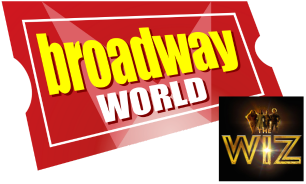Oh! The Towering Feeling! 'My Fair Lady' at Opera House
My Fair Lady
Book and Lyrics by Alan Jay Lerner, Music by Frederick Loewe
Director, Trevor Nunn; Choreography and Musical Staging, Matthew Bourne; Scenic and Costume Designer, Anthony Ward; Sound Designer, Paul Groothuis; Lighting Designer, David Hersey
CAST
Christopher Cazenove, Professor Henry Higgins; Lisa O'Hare, Eliza Doolittle; Tim Jerome, Alfred P. Doolittle; Walter Charles, Colonel Hugh Pickering; Marni Nixon, Mrs. Higgins; Barbara Marineau, Mrs. Pearce; Justin Bohon, Freddy Eynsford-Hill
Performances through February 17, 2008 at The Opera House; purchase tickets at Colonial Theatre Box Office (106 Boylston St.), The Opera House Box Office (539 Washington St.), Ticketmaster 617-931-2787 or www.BroadwayAcrossAmerica.com
The original production of My Fair Lady opened at the Mark Hellinger Theatre in New York on March 15, 1956 and ran for 2,717 performances. It won eight Tony awards, including Best Musical and remains one of the top fifteen longest-running Broadway musicals of all time. Thanks to Cameron Mackintosh and The National Theatre of Great Britain, Lerner and Loewe's precious masterpiece is now at The Opera House in Boston to be appreciated by another generation of theatre lovers.
Fifty years later, the bloom is most assuredly not off the rose in this incarnation which won five Laurence Olivier Awards for the West End production in 2001. With the original U.K. artistic team in place, it is not so much a revival as a reimagining, as everything seems crisper and clearer, like the difference between regular and HD-TV. The Pygmalion story is unchanged, but Director Trevor Nunn makes some interesting choices to alter the angles just a bit, including moving the time period from 1914 to 1910 following the death of the monarch King Edward VII, as well as weaving in the Women's Suffrage Movement as backdrop to Eliza Doolittle's burgeoning independence.
The brightest light in this glittery cast is Lisa O'Hare as Eliza, the flower-selling street girl who is molded into a fine lady by Professor Henry Higgins. As she intoned the first notes of "Wouldn't It Be Loverly?" I melted into my seat and resolved to help her find a room far away from the cold night air with an enormous chair and lots of chocolates if it's the last thing I do. Even with the Cockney accent, she has an angelic voice that lilts in the sweet songs and shows its strength and timbre in the livelier tunes. She moves about the stage with energy or grace as called for and trips the light fantastic fantastically with Professor Higgins at the Embassy Ball. While following in the footsteps of Julie Andrews and Audrey Hepburn, O'Hare does not breed comparison as she creates her own Eliza with equal measures of spunk and charm and a fiery determination to make her way in a world where she does not fit the mold.
Christopher Cazenove is a wonderful Henry Higgins, conveying his air of superiority from the moment he takes the stage and discovers Eliza amid the Costermongers at Covent Garden. He wraps himself in the cloak of Henry's narcissism and behaves as if the world revolves around him. Yet his interpretation shows a hint of insecurity underlying the bluster and apparent coldness, implying that Higgins is more a socially inept Mummy's boy who is unable to connect and afraid to commit than a misogynist who is above it all ("I'd be equally as willing for a dentist to be drilling than to ever let a woman in my life…"). Cazenove does a fair amount of talk-singing à la Rex Harrison, but has a pleasant sound and sells each song with his dynamic delivery.
As Higgins' agreeable sidekick Colonel Pickering, Walter Charles brings warmth, dignity, and low key humor to the role. He exudes British stiff upper lip quietude, but proudly bares his vulnerability where Eliza is concerned. He and the housekeeper Mrs. Pearce (Barbara Marineau) show their growing affection for the young lady as she works her way into their hearts even as she sometimes exasperates them.
Tim Jerome makes the most of his relatively short time on stage as Alfred P. Doolittle, Eliza's ne'er-do-well father. He is featured in a production number in each act ("With a Little Bit of Luck" and "Get Me to the Church on Time") which threaten to bring down the house. "Luck" includes a Stomp-like noisy, rhythmic, joyful segment; "Church" offers rolling sets to emulate the passage of time and music halls during Alfred's last night of pre-marital freedom; and Jerome looks like he is having the time of his life through it all.
In a nod to My Fair Lady history, Marni Nixon appears as Henry's mother Mrs. Higgins. She dubbed Audrey Hepburn's singing in the 1964 film version, but ironically is limited to a speaking role here. However, she wrings every note from her character who is classy, but not classist as she too takes to her son's protégé. Experience pumps through Nixon's veins making her a marvelous asset to the company. Perhaps the dulcet voice of Justin Bohon as Freddy Eynsford-Hill compensates for not getting to hear her sing. Freddy's character is kind of one-note, but he does have one of the iconic songs ("On the Street Where You Live") and Bohon nails it. The rest of the ensemble is a talented, cohesive unit that acts, sings, and dances with vigor. They are a delight to behold.
My Fair Lady is a visual feast thanks to the dazzling, breathtaking costumes and imaginative set design by Anthony Ward and Matthew Bourne's inventive choreography. The Professor's two-story book-lined study with its giant skylight is masculine and rich, reflecting the station of its occupant. The pubs and music halls visited by Alfred are rank and colorful, quite the opposite of the tasteful surroundings at Ascot, the Embassy, and Mrs. Higgins' conservatory. Eliza's most stunning outfits are the elegant white gown and tiara she wears to the Ball and the amazingly oversized hat that announces her arrival in polite society at the races. In a departure from the original play, the ensemble is dressed all in black at Ascot as a sign of national mourning for the late King. In this scene, Bourne has the dancers majestically high step like well-trained thoroughbred horses and it really works to bring the audience into this tony world. Whether it is the upper crust in their bejeweled gowns and formal wear waltzing with royalty or the street vendors and pub-crawlers celebrating Papa Doolittle's impending marriage, every song advances the story and every dance number offers something special.
With the initial acclaim and success of My Fair Lady five decades ago, little tampering was warranted to bring this classic back to the stage. It was and remains a story about transformation that transports the audience in the process. MFL was one of the first Broadway musicals I saw as a child and this production certainly took me back even as it kept me captivated. It's fair to say the changes that Mackintosh et al fashioned have served the Lady well.
Videos

